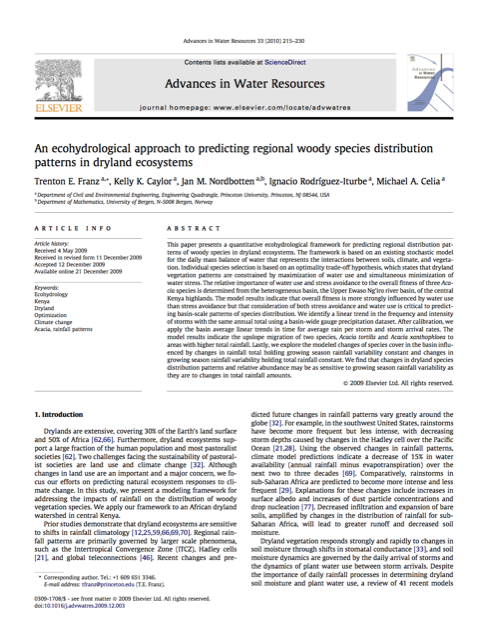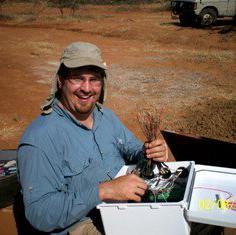An ecohydrological approach to predicting regional species distribution patterns in dryland ecosystems

*Franz, T., Caylor, K.K., Rodriguez-Iturbe, I., Celia, M. (2010) “An ecohydrological approach to predicting regional species distribution patterns in dryland ecosystems,” Advances in Water Resources, doi:10.1016/ j.advwatres.2009.12.003.
This paper presents a quantitative ecohydrological framework for predicting regional distribution patterns of woody species in dryland ecosystems. The framework is based on an existing stochastic model for the daily mass balance of water that represents the interactions between soils, climate, and vegetation. Individual species selection is based on an optimality trade-off hypothesis, which states that dryland vegetation patterns are constrained by maximization of water use and simultaneous minimization of water stress.
The relative importance of water use and stress avoidance to the overall fitness of three Acacia species is determined from the heterogeneous basin, the Upper Ewaso Ng’iro river basin, of the central Kenya highlands. The model results indicate that overall fitness is more strongly influenced by water use than stress avoidance but that consideration of both stress avoidance and water use is critical to predicting basin-scale patterns of species distribution. We identify a linear trend in the frequency and intensity of storms with the same annual total using a basin-wide gauge precipitation dataset. After calibration, we apply the basin average linear trends in time for average rain per storm and storm arrival rates.
The model results indicate the upslope migration of two species, Acacia tortilis and A. xanthophloea to areas with higher total rainfall. Lastly, we explore the modeled changes of species cover in the basin influenced by changes in rainfall total holding growing season rainfall variability constant and changes in growing season rainfall variability holding total rainfall constant. We find that changes in dryland species distribution patterns and relative abundance may be as sensitive to growing season rainfall variability as they are to changes in total rainfall amounts.
